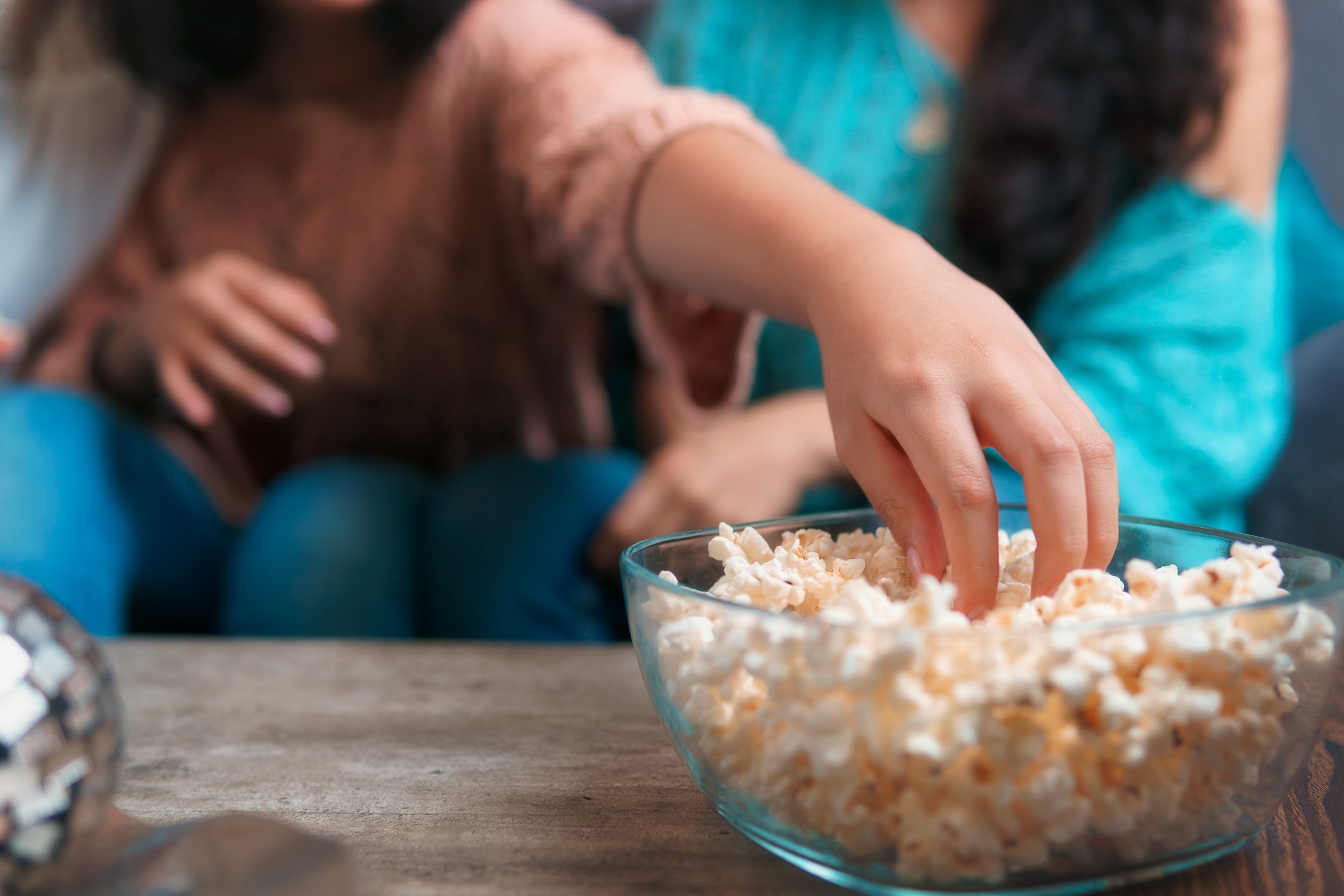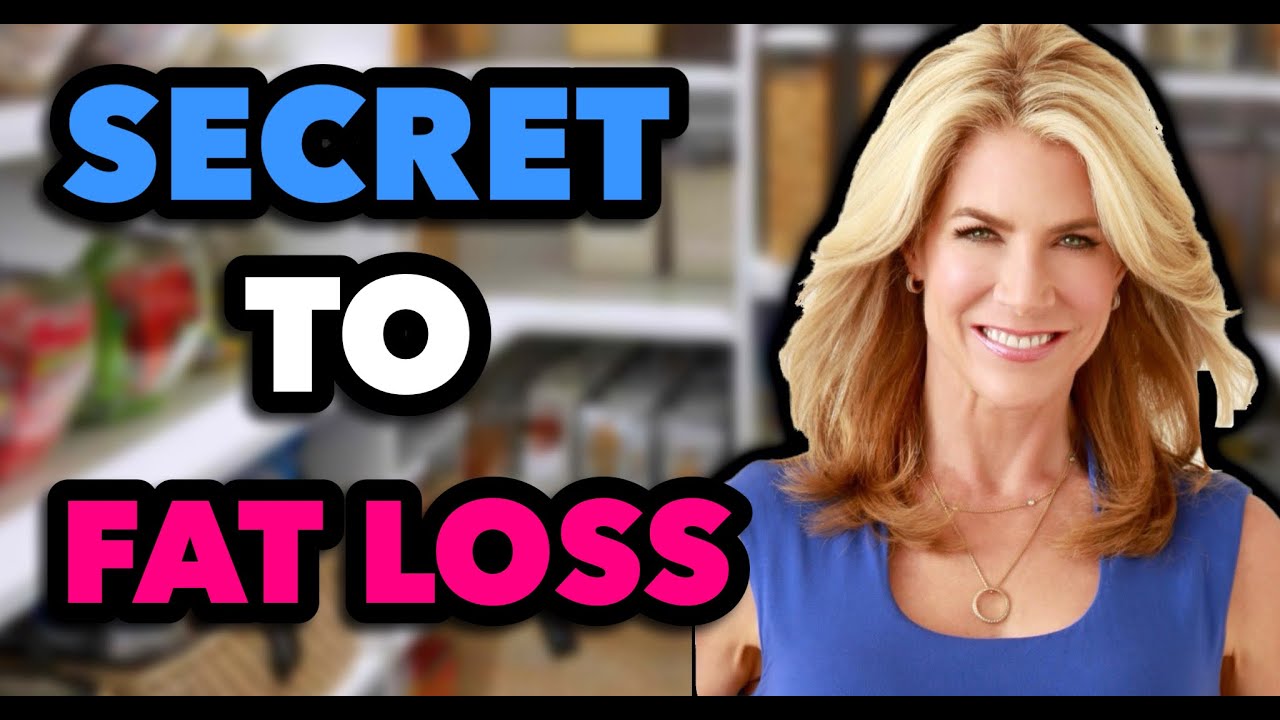When you think about the worst foods for weight loss, what comes to mind? Maybe warm croissants or donuts. You probably recall some childhood favorites, such as a gooey grilled cheese or hot chocolate. Perhaps you remember that seasonal beverage you saw in your favorite coffee shop, which contains more added sugar than a milkshake.
We can agree these foods would be a hard “no” for weight loss. But what about the “healthier” options on supermarket shelves?
The worst foods for weight loss are often those that get marketed as somehow “healthy.” They carry an undeserved health glow, which means you’ll likely reach for seconds or thirds thinking they’re OK.
Over my four decades helping people break through weight loss resistance, these five foods have appeared again and again. Many people express shock or disappointment when I tell them they’re not diet foods… and they could actually be stalling their weight loss. But I won’t leave you hanging: I’ve got just-as-delicious, lower-sugar impact alternatives for each of these.
5 Healthy Swaps for Weight Loss
1. Popcorn
You’re probably aware that movie theater popcorn, drowning in salt and fake butter, isn’t healthy. Likewise, microwave popcorn is a concoction of damaged fats and toxic chemicals.
Somehow, though, manufacturers still sell “skinny” or “guilt-free” popcorn. Whichever way you pop it, it’s not.
For one, popcorn is corn, and corn can raise blood sugar, increasing the insulin levels that store fat.
“Corn itself is a high-glycemic food, meaning that when you eat it, your blood sugar will spike in much the same way as consuming cane sugar,” says Vincent Pedre, MD, in Happy Gut.
Corn is also an inflammatory food that may create a gluten-like reaction. According to Peter Osborne, DC, corn has a form of gluten called zeins. Corn gluten behaves very similarly to the gluten in wheat and creates an inflammatory effect in your gut.
Osborne also notes that corn can be high in mold and mycotoxins, which can hurt your immune system and may contribute to inflammation in the gut and beyond.1 Most corn is genetically modified (GMO), too. Even with “healthier” varieties, its light, fluffy texture makes popcorn very, very easy to overeat.
Read 5 healthy alternatives to popcorn in this blog.
Swap it out: Nuts and seeds give you that same satisfying crunch without the empty carbs. Try slow-roasted nuts (see my recipe below) or Smoked Paprika and Cayenne Roasted Almonds.
2. Ice Cream Alternatives
It used to be that you’d go into the ice cream aisle and find the usual dairy-based varieties. Not anymore. As the downsides of dairy get exposed and plant-based milk alternatives become popular, ice cream manufacturers have created all sorts of dairy-free frozen desserts.
Oat, almond, macadamia, coconut, and soy are among the contenders here. I’m not a fan of soy (read why here), though other varieties may be fine. I like So Delicious® coconut milk ice cream, sweetened with erythritol and monk fruit. Other varieties, however, contain soy, added sugars, and other “no” ingredients.
Many frozen desserts, in fact, contain as much sugar as their originals. One salted caramel-flavored oat milk ice cream I found contained 28 grams of added sugar per serving. That’s nearly seven teaspoons of added sugar (or over two tablespoons)—if you stick to one serving!
Others market themselves as lower-calorie ice cream alternatives. Calories do matter for weight loss, but where they come from matters more. If those calories come from things like added sugars (as many ice cream alternatives do), they aren’t better options.
Plus, let’s be honest: fewer calories make you more likely to eat the entire pint. You probably wouldn’t sit down and eat a whole pint of Ben & Jerry’s, but you could easily do so with one of those 300-calorie-a-pint ice creams.
Swap it out: The best ice cream is homemade. This coconut ice cream provides fat-burning medium-chain triglycerides (MCTs) and just five simple ingredients.
3. Low-Fat Yogurt
The last few decades have vindicated dietary fat. Once a health villain, we now know that many fats are actually healthy. Unfortunately, many yogurt manufacturers didn’t get that memo, because even today, low-fat and fat-free yogurts line most supermarket shelves.
One issue is that they’re dairy, with all of dairy’s problems. (Learn more and find out the best healthy swaps for dairy in this article.)
Another is that stripping fat from yogurt means you’re removing important fatty acids like conjugated linolenic acid or CLA (which can help with weight loss), along with important nutrients like vitamin D.
Many yogurt varieties also contain undesirable ingredients, including added sugars.
“Your morning low-fat yogurt has more sugar than a can of soda,” says Mark Hyman, MD, in Eat Fat, Get Thin.
Some non-dairy yogurts can be healthy. But like with ice cream alternatives, many contain added sugars and other “no” ingredients. I even found one that bypasses the “no added sugar” rule by using apple puree concentrate, which is sugar.
As a general rule (this goes for every food here), fewer ingredients are better. I can’t emphasize this enough: read those labels very carefully.
Swap it out: These 3-Ingredient Berry Protein Fro-Yo Bites are so quick and easy to make! Five minutes in the kitchen, and you’ve got healthy, dairy-free fro-yo perfection.
4. Whole Wheat Anything
We’ve come a long way when it comes gluten-containing whole grains. Newer research shows that a gluten-free diet can help you lose weight and lower inflammation.2 Regardless, manufacturers promise ”whole-grain goodness” as an alternative to white flour in breads, muffins, cereals, and all kinds of processed foods.
Talk about clever marketing. Most “whole grain” products are mostly made of refined flours, Bonnie Liebman (director of nutrition at Center for Science in the Public Interest) tells Time Magazine. She says that most of these products are low in fiber and high in sugar.3
In so-called healthy wheat breads and other products, I’ve found fructose and other added sugars, inflammatory oils, and all kinds of other problematic ingredients. Wheat can also raise your sugar just as easily as white flour.
“Grains are starch juggernauts and almost all of them raise blood sugar (and insulin) quickly,” say Jonny Bowden, Ph.D., in The 150 Healthiest Foods on Earth.
Swap it out: This Garlic Hummus With Lentil Chips gives you the crunch of wheat crackers without gluten, inflammatory oils, or other nastiness.
5. Protein Bars
On a list of foods not to eat when trying to lose weight, this one may surprise you. After all, protein bars are often positioned as healthy meal replacements, smart snacking alternatives, and post-workout fuel.
Talk about clever marketing: many commercial protein bars are simply expensive candy bars with a few cheap nutrients added. They contain undesirable ingredients, including:
- Added sugars
- Artificial sweeteners
- Inflammatory oils
- Dairy and other potential food intolerances
- Too many naturally occurring sugars or added sugars
I randomly selected one online and found the following ingredients (bolded ones are problematic):
FRUCTOSE-GLUCOSE SYRUP, RICE CRISPS (RICE SEMOLINA, SUGAR, WHEAT GLUTEN, PALM FAT, MALTED BARLEY FLOUR, SALT), RICE FLOUR, MILK PROTEIN, OAT BRAN (8%), MALTODEXTRIN, FAT REDUCED COCOA POWDER (4%), OAT FLAKES (4%), ALMOND PASTE, COCOA MASS (2%), FLAVOURING, SODIUM CITRATE, FRUCTOSE, HUMECTANT (GLYCEROL), SALT, MAGNESIUM CARBONATE. MAY CONTAIN: PEANUTS, HAZELNUTS, SOY.
The first ingredient is fructose, the most damaging sugar that wreaks havoc on your liver, makes you insulin resistant, scrambles your hunger-regulating hormones, and contributes to weight gain.4
Couple that with the other problem ingredients—including other forms of sugar, dairy, maltodextrin (corn), and gluten—and you can see why I call many protein bars expensive candy bars!
Swap it out: It’s hard to find a low-sugar protein bar made with NO Hi-FI ingredients. But we’ve created three, all of which satisfy your sweet tooth and CRUSH your cravings for hours:
Final Thoughts
The good news is that just by making some simple changes to what you eat and what you buy at the grocery store, you’ll finally drop weight fast, reverse belly bloat and inflammation, and feel and look better than ever before. No more buying health-impostor foods that promise to help you lose weight but only let you down!
Are you ready to break free from the healthy-food trap and claim your perfect weight? The Virgin Diet provides the tools and resources you need to help calm inflammation from hidden food sensitivities, lose fat, reclaim your health, and feel energized and better than ever.*
Learn more about the cleanse here.
The views in this blog by JJ Virgin should never be used as a substitute for professional medical advice. Please work with a healthcare practitioner concerning any medical problem or concern. The information here is not intended to diagnose, treat, or prevent any disease or condition. Statements contained here have not been evaluated by the Food and Drug Administration.
*These statements have not been evaluated by the Food and Drug Administration. This product is not intended to diagnose, treat, cure, or prevent any disease.
References:
- Soares FL, de Oliveira Matoso R, Teixeira LG, Menezes Z, Pereira SS, Alves AC, Batista NV, de Faria AM, Cara DC, Ferreira AV, Alvarez-Leite JI. Gluten-free diet reduces adiposity, inflammation and insulin resistance associated with the induction of PPAR-alpha and PPAR-gamma expression. J Nutr Biochem. 2013 Jun;24(6):1105-11. doi: 10.1016/j.jnutbio.2012.08.009. Epub 2012 Dec 17. PMID: 23253599.
- Elliott SS, Keim NL, Stern JS, Teff K, Havel PJ. Fructose, weight gain, and the insulin resistance syndrome. Am J Clin Nutr. 2002 Nov;76(5):911-22. doi: 10.1093/ajcn/76.5.911. PMID: 12399260.






